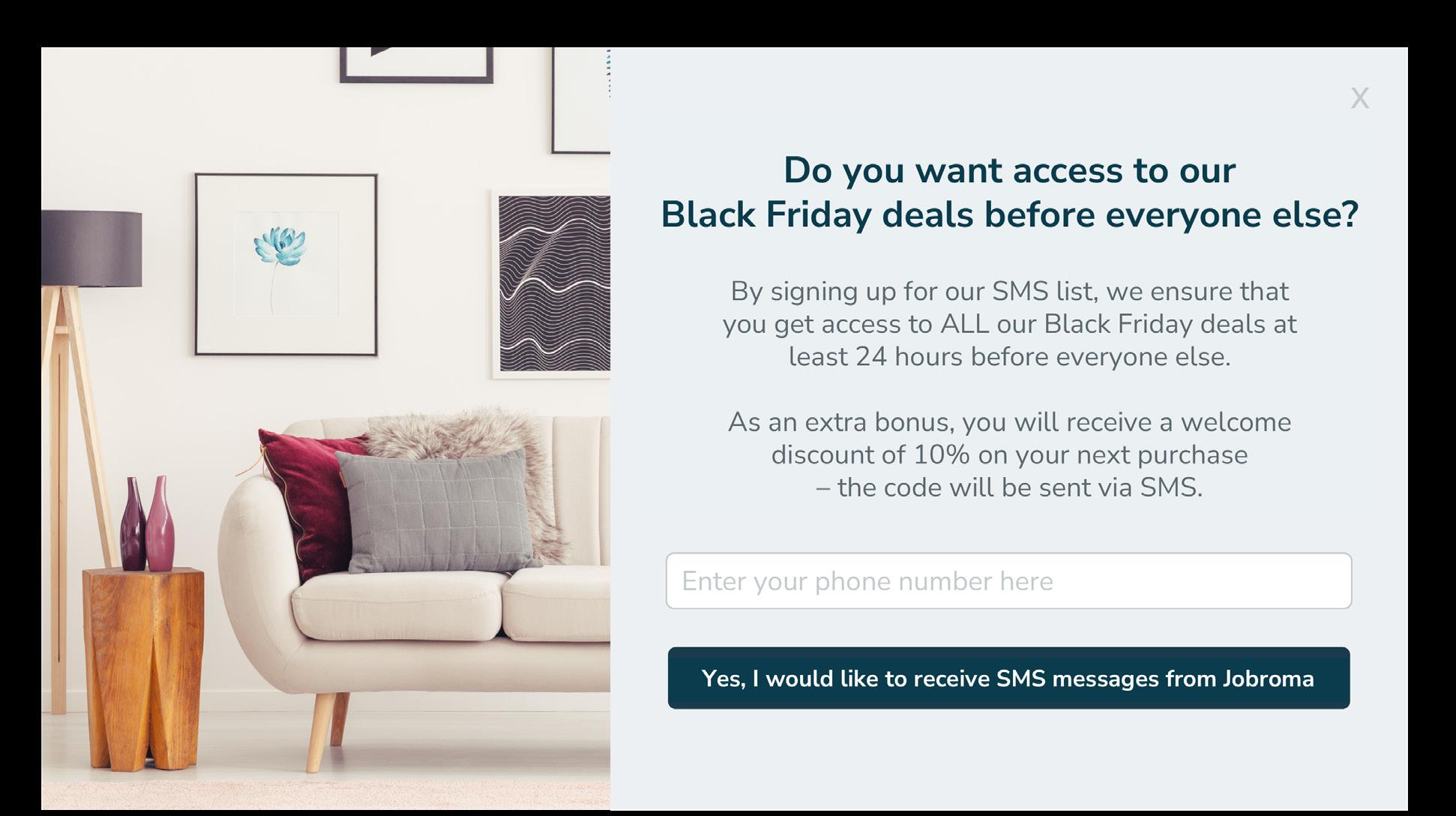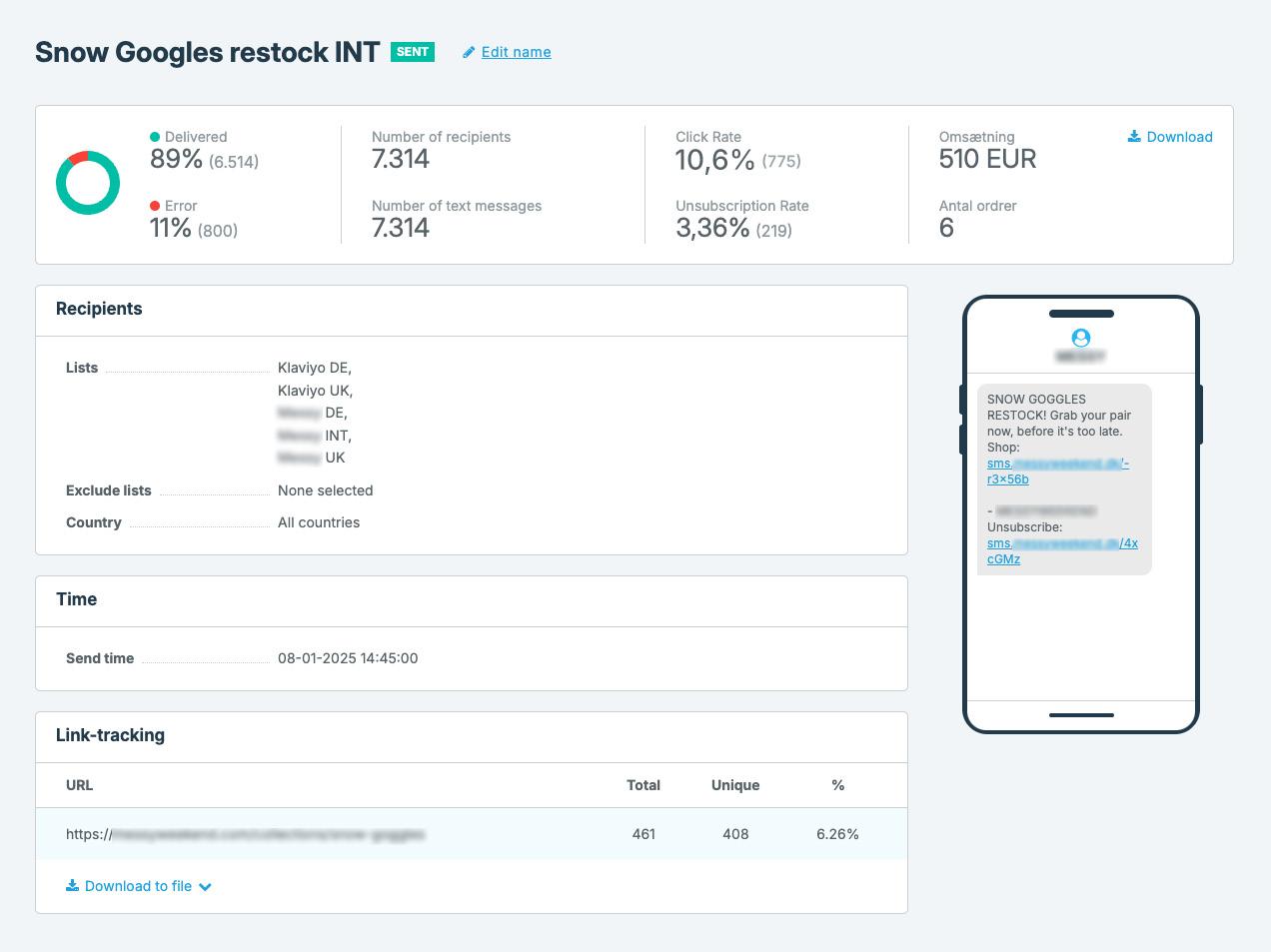Introduction
SMS marketing is one of the best ways to stand out from the crowd and ensure that your message reaches the recipient. It is therefore an excellent communication channel for those who want to establish a more personal connection with their customers.
With a well-executed SMS marketing strategy, you can:



Increase sales
Enhance engagement
Establish a direct connection with customers
But how do you get started with such an SMS strategy?
Follow our 6-step guide - and you will be left with an SMS strategy ready for successful execution.
1 Define your goals
Your SMS strategy cannot stand alone; it should align with the rest of your marketing strategy.
The first step, therefore, is to define your goal for SMS marketing.
E.g., how does this channel fit into your overall marketing strategy, and what other goals can SMS help you achieve?
The answer could be to enhance the customer experience, increase customer satisfaction, engage customers more effectively, foster greater loyalty among existing customers, and so on.
You can also work with more directly measurable KPIs, such as aiming for a 20 % increase in direct sales through SMS or achieving an ROI of 110 %.
2 Identify your target audience
Once you know what you want to achieve with SMS, it’s time to define who you need to communicate with to reach that goal. This could include broad audiences such as existing customers, potential customers, or a combination of both.
Within each target audience, it may also be relevant to further segment based on factors such as industries (primarily for B2B customers) or purchase data (primarily for B2C customers).
The key is to have a reasonably clear idea of who your target audience is. You can use this knowledge to tailor your communication according to their buying stage and individual needs.
3 Collect SMS permissions
Now that you know why you want to send SMS messages and to whom, it’s time for one of the most important steps in SMS marketing: collecting your SMS permissions.
Without SMS permissions, there is no one to send your messages to. Therefore, your next step will be to start collecting these permissions.
We understand that it may seem a bit overwhelming to get started with this step, but fortunately, it doesn’t have to be.
Go to our article „How to Collect SMS Permissions“ to find 6 popular examples of how you can gather permissions to send SMS.
Feel free to borrow these ideas to start collecting permissions today.

4 Create your own SMS content plan
Now that you know why and to whom - we’ve reached the ‘when’ part.
It can be beneficial for you to have a plan for when you want to send SMS messages and what content you want to include. This overview can for example take the form of a calendar, where you mark the days, you want to send an SMS campaign.
Also, consider relevant topics for your campaigns and remember to consider holiday seasons etc.
Below you see an example of what a content plan looks like. It is simple – but effective.
A-coffee: Contentplan, January 2024
5 Send your first SMS message
If you’ve gone through the first 4 steps, you now have your why, who, when, and what. You’re also well on your way to collecting SMS permissions from those you want to communicate with.
Now it’s time for what you’ve been eagerly anticipating: sending your first SMS message.
When crafting your first text, remember these best practices:
1
Keep the message short, relevant, and engaging.
2
Clearly identify yourself as the sender.
3
Include a call-to-action that instructs the recipient on how to respond to the message.
4
Always provide an option for opting out in any marketing message.
6 Monitor your results
This final step is relevant once you’ve started sending SMS campaigns.
Like with many of your other marketing efforts, you should continuously monitor and analyse your SMS results. While it’s not possible to gather data on SMS open rates, that’s precisely why you should work with unique SMS codes for discounts or, even better, linktracking. With link tracking, you get a precise overview of your campaign’s results because you can see how many recipients clicked a specific link in your SMS. This feedback can be used to fine-tune and optimize your strategy.
That was it for now. All that is left to say is: Good luck with your SMS strategy!

